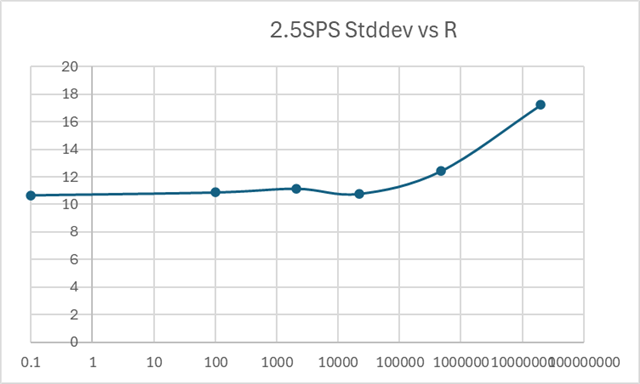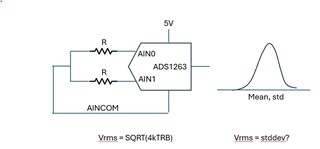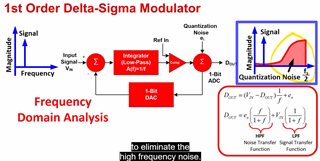Tool/software:
I am using the ADS1263 to measure thermal noise across a resistor. I have 5V analog supply with internal 2.5V Vref for REFP and REFN. I configure sampling at 2.5 SPS with sync1 filter. I configure the level shift output on AINCOM and connect two resistors of value R differentially from AINCOM to AIN0/AIN1. Then I measure 5K samples and determine the standard deviation S. I convert that to bits B by: B = log2(S).
First question: From the datasheet, noise should be 0.121uVrms which is 0.121E-6/(1/2^32) = 520 lsbs = 9b. It looks like from my data I see a noise floor at ~11b. Am I calculating this incorrectly? Why might I see 4x higher noise than datasheet? Would it be power supply noise on AINCOM from the level shifter?
Second question: If I want to estimate the expected Vrms of the thermal noise I need to know the bandwidth of the inputs to know how much noise aliases right? I see with PGA bypassed the differential input impedance is spec'ed at 40Mohm. What is the capacitance?
Third (bonus) question: If I want maximum ADC noise I sample at 38.4Ksps with sync1. I assume some of that noise is device noise (thermal, flicker, etc) and some is quantization noise. Is that correct? I see repeatedly in literature that quantization noise is treated as white which makes sense from a power spectrum point of view. But, what can be said about the randomness or entropy of this noise. Technically it is deterministic right?
Best,
Rachael Parker





